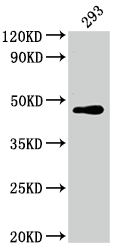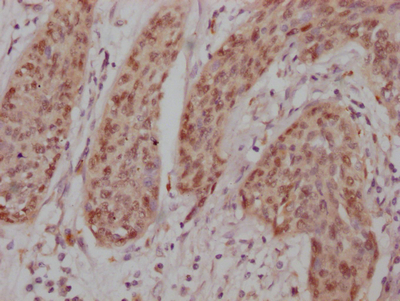The JUN recombinant monoclonal antibody is prepared using a combination of protein technology and DNA recombinant technology. The process starts by immunizing mice with a synthesized peptide from human c-Jun, followed by extraction of spleen cells' RNA under aseptic conditions. The cDNA synthesized by RNA reverse transcription is then used as a template for PCR amplification of the JUN antibody gene. The obtained JUN antibody gene is inserted into a vector and transfected into host cells for culture. The JUN recombinant monoclonal antibody is then purified from the supernatant of the cell culture through affinity chromatography. Rigorous verification of this antibody is conducted to ensure its accuracy, and it can be utilized for detecting human JUN protein in ELISA, WB, and IHC experiments.
The JUN protein is a transcription factor that plays a crucial role in regulating gene expression in response to a variety of signals, including growth factors, cytokines, and stress. It forms homodimers or heterodimers with other transcription factors, such as FOS, to bind to specific DNA sequences known as AP-1 sites in the promoter regions of target genes. Once bound, JUN can either activate or repress the transcription of these genes, depending on the context and the presence of other cofactors. JUN-regulated genes are involved in a wide range of biological processes, including cell proliferation, differentiation, apoptosis, and inflammation.







